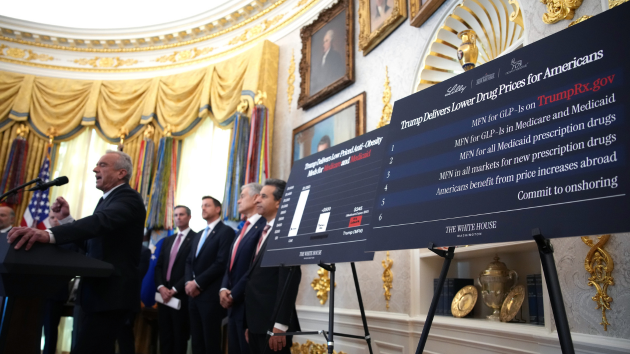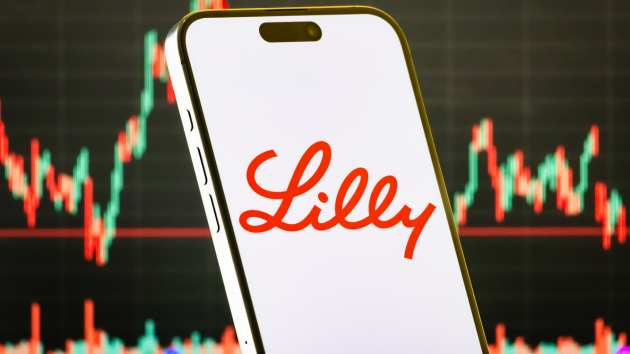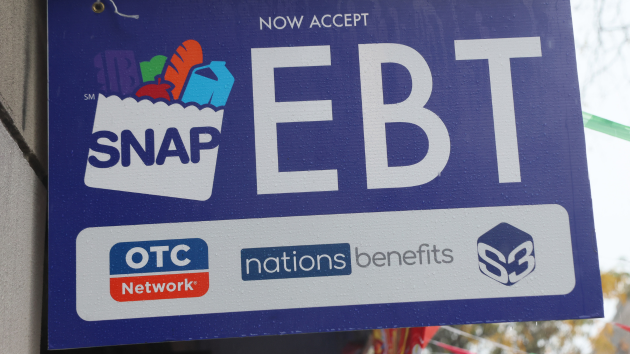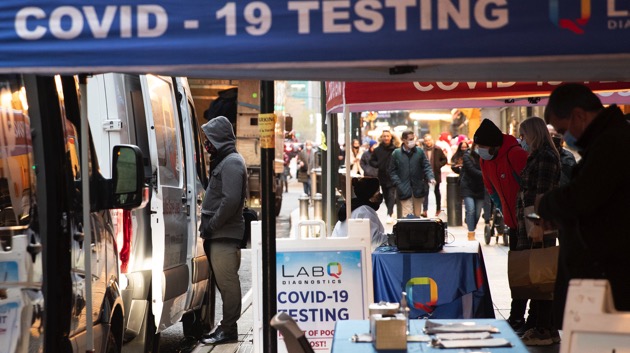High school sports feel impact of omicron surge, from paused games to mask mandates
Written by luck on January 13, 2022

(NEW YORK) — High school athletics are feeling the impact of the omicron surge, from paused games to restricted fans, amid a winter season that coaches and administrators already anticipated would pose challenges for indoor, close-contact sports.
Amid record COVID-19 cases in the U.S., schools are revisiting coronavirus protocols and guidelines to safely keep students playing in person. Teams have had to limit out-of-state travel due to transmission risks, or postpone in-league games due to cases. The Los Angeles school district, the second largest in the country, returned from winter break in person this week with a pause on all sports competitions due to surging cases.
Despite omicron, school officials are optimistic districts won’t experience the same level of disruption as last school year — when some programs saw abbreviated seasons, if any at all — thanks to measures like vaccination and social distancing.
“It has not risen to the level that high school sports across the nation are being disrupted to the point where they can’t go on,” Karissa Niehoff, executive director of the National Federation of State High School Associations, the national leadership organization for high school sports and performing arts activities, told ABC News. “There’s never been an expressed need for shutdown because people know how to deal with it now.”
Readjusting schedules and protocols
Before the Los Angeles Unified School District returned to the classroom Tuesday following winter break, more than 65,000 public school staff and students had tested positive for COVID-19, for a positivity rate over 14%, according to district data. The school district temporarily paused all athletic competitions this week as it monitors cases, with student athletes allowed to practice outdoors while wearing a mask.
The district is also using this week to upgrade its health and safety protocols to be in compliance with stricter protocols from the county health department. Teams with four or more linked cases over a 14-day period are now required to suspend activities for a week.
“We will reevaluate our data and determine next steps before the end of the week,” the district said in a letter sent to families. “Our goal is to resume athletic competitions as soon as possible.”
As of Wednesday, the district did not have an update on its plans, a Los Angeles Unified spokesperson told ABC News.
Other entities have revised protocols amid the surge. In Washington state, all athletes and team personnel in high-risk sports are required to have regular COVID-19 testing regardless of vaccination status “in response to recent sports-related outbreaks,” health officials said. Testing frequency was also increased to three times weekly. Previously, schools were testing unvaccinated students twice a week.
The revised rules came after the state health department traced 200 COVID-19 cases to multiple wrestling tournaments in early December.
In Portland, Oregon, the school district made several changes to its COVID-19 protocols through at least early February to help stem the spread of the virus, including requirements that student-athletes wear masks at all times. For competitions, spectators ages 5 and up also now must show proof of being fully vaccinated or a negative COVID-19 test within 72 hours.
Some schools have recently restricted the number of fans who can be in attendance. In Oahu, spectators are not allowed until further notice “based on the rising number of COVID-19 cases,” the Hawaiian island’s school sports association said.
In Fairfax County, Virginia, school officials are limiting crowds to just family members through Jan. 21 due to the uptick in cases in the community.
“The health department had anticipated the surge, and we’ve taken appropriate measures to try to limit as much of an impact as far as the spread of the virus,” Bill Curran, director of athletic programs for Fairfax County Public Schools, told ABC News.
Successes and challenges
Mitigation strategies have helped keep sports in play with only minor disruptions this year, Niehoff said. The measures have included protocols “big and small,” from widespread vaccination efforts to having multiple, sanitized basketballs at the ready during games, digital ticketing and concessions and frequent communication when potential postponements arise.
“If you’ve got a healthy school and then a school that can’t play, the healthy school goes and finds another healthy school and we get the game on,” she said. “We’ve been creative and supportive and a little safer, because we have a better idea of what we’re dealing with.”
Schools have gotten accustomed to being flexible during the pandemic, though it’s not without its challenges.
In New York City, sports programs this school year have had to react to evolving protocols around vaccination requirements, spectators and travel while seasons were about to start or underway.
For Shawn Mark, head coach of the South Shore boys’ basketball team in Brooklyn, limits on traveling to competitions outside the city have “hurt us.”
“To be the best you got to play against the best,” Mark told ABC News. “Sometimes it’s not always in New York City, you got to go out of town.”
All athletes in the New York City public school system — the largest in the nation — are required to be vaccinated in order to play.
The city’s public school enrollment has also dropped by about 17,000 students this year, according to preliminary data — posing another challenge as athletes have left the public school system or the city altogether, Mark said.
“They want to play, they don’t want any risk of what happened before, where a shutdown happens and then, you know, the season’s over,” he said.
Despite a couple postponements, Mark is optimistic that this season will continue.
Niehoff doesn’t expect schools to see the same level of disruption as last school year, as long as states and districts continue to exercise caution and vaccination numbers trend up.
“We are hearing a success story, obviously concerns as they arise, but they tend to be remediated pretty quickly,” Niehoff said.
Curran is “cautiously optimistic” as cases appear to be quieting down. After playing abbreviated schedules last school year, the school district has returned to its regular sports seasons.
“We are able to offer our program in a pretty meaningful way,” Curran said, noting that the impact on students’ overall health and well-being has been “phenomenal.” “We’ve seen some cancellations of games here and there throughout, but for the most part we’ve been able to keep things moving.”
Copyright © 2022, ABC Audio. All rights reserved.





